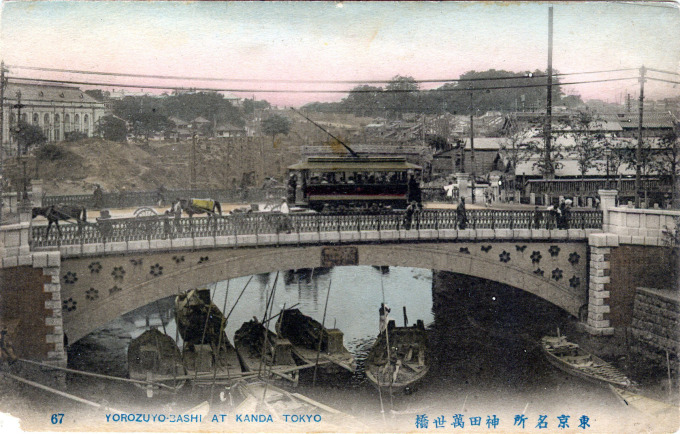“The most important thoroughfare in Tokyo, which none should fail to see, leads from the Shimbashi terminus to Yorozuyo-bashi and Ueno. The portion of it lying nearest to [Shimbashi] is called the Ginza, and has a number of shops in European style.
“Proceeding along it, the traveller crosses the Kyobashi and Nihon-bashi bridges, from the latter of which all distances in Eastern Japan are calculated.”
– A Handbook for Travellers in Japan, Basil Hall Chamberlain, 1907
See also:
Manseibashi Station (1912-1936)
Chuo Rapid Line (neé Kobu Line), Tokyo, c. 1910.
Nihonbashi Bridge, Tokyo
‘Yorozuyo’ is an example of complications associated with the Japanese written language. The kanji and meaning for Yorozuyo-bashi [萬世橋, ten-thousand generation bridge] is the same as Mansei-bashi [万世橋] except for the latter’s use of the simplified form of the former’s initial but deprecated character [萬 > 万, ten-thousand].
“It was the then-governer of Tokyo, Tadahiro Okubo, who wanted to name the span (completed in 1903 of stone and iron) Yorozuyo-bashi. replacing an earlier bridge called Megane-bashi [eye-glass or spectacles bridge]. But ‘Yorozuyo-bashi’, however, seemed too complicated even for the locals. So, the alternative reading – Manseibashi – was instead used after the Chuo Main Line terminal was opened at the intersection in 1912.



Pingback: Manseibashi Station (1912-1936). | Old Tokyo